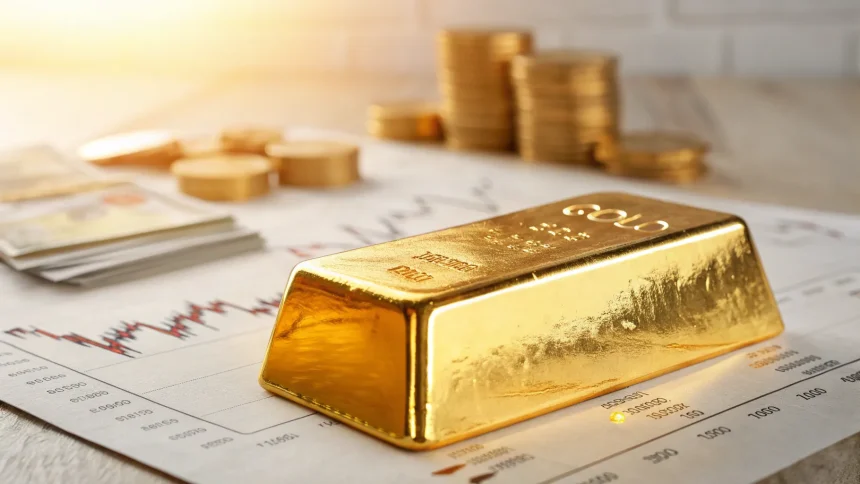Gold has surged, with some gold ETFs beating major stock indexes over the past 12 months. That shift is drawing fresh attention to an asset long treated as a steady hedge. The run-up has investors asking what is driving the move now and whether it can continue.
The latest push comes as a finance professor weighs in on the forces behind the rally and the odds it sticks. The discussion draws on past research, including “Understanding Gold” by Claud B. Erb and Campbell R. Harvey, and looks at what to watch next.
“Gold is on fire right now.”
“Gold is supposed to be boring, an inflation hedge. But right now, it’s responding to something else.”
Why gold is rising now
Gold often climbs when investors want safety, when the dollar softens, or when real interest rates fall. This year’s gains appear tied to a mix of those forces.
Market watchers point to steady central bank buying, persistent geopolitical risk, and expectations that interest rates could ease. If real yields slip or the dollar weakens, gold tends to look more attractive because it pays no income.
ETF flows offer a quick read on sentiment. Some funds tracking bullion have drawn new money as stock volatility and rate uncertainty linger. The outperformance “over the past 12 months” suggests that buyers preferred perceived safety while waiting out policy and growth signals.
Is inflation the main story?
Inflation is part of gold’s appeal, but the link is imperfect month to month. The classic story says gold protects purchasing power, yet history shows long stretches where prices move for other reasons.
As the program notes, gold is “supposed to be boring, an inflation hedge,” but something else seems at work. Real rates and the dollar often explain shorter-term swings better than headline inflation. When inflation cools but real yields remain tight, gold can still rally if investors expect easing ahead.
What history and research say
Research by Claud B. Erb and Campbell R. Harvey examines gold’s long-run anchors. Their work finds gold’s fair value can be viewed through lenses such as inflation over very long periods and currency trends. But they caution that mispricing can persist for years.
In practice, cycles in gold can be long. Surges often follow stress events or shifts in monetary policy. Past peaks were not only about inflation but also about confidence, currencies, and rate paths. That makes timing difficult for traders and long holders alike.
“We talk to a finance professor about what’s behind the current gold rush and if gold’s hot streak is built to last.”
Who benefits—and who should be careful
Gold miners can gain more than bullion when prices rise because their profits scale with each extra dollar in the gold price. But they also face cost risks and operational issues. Physical gold and ETFs tracking spot prices move one-for-one with bullion but involve storage or fund fees.
For diversified investors, small allocations have historically helped during drawdowns in stocks or bonds. Large bets are riskier. The metal can stagnate for long periods, and it does not produce cash flow like dividends or interest.
Signals to watch next
The next leg of the move will likely hinge on macro signals. These indicators could offer clues:
- Real interest rates: Falling real yields have often supported higher gold prices.
- U.S. dollar: A weaker dollar tends to lift dollar-priced commodities.
- Central bank buying: Sustained purchases can tighten supply.
- ETF flows: Inflows may reflect growing demand from retail and institutions.
- Geopolitics: Heightened risk can boost safe-haven demand.
How long can the streak last?
History suggests hot streaks can run until the policy or currency backdrop changes. If central banks signal deeper rate cuts or inflation expectations rise again, gold may keep its edge. If real yields rise or the dollar firms, momentum could fade.
Investors weighing exposure can match their approach to their goals. Long-term holders often prefer steady, small allocations. Traders tend to monitor rates, the dollar, and positioning. As Erb and Harvey’s research reminds readers, patience and valuation matter when the story gets loud.
Gold’s climb has made it one of the year’s standout assets. The next phase depends on policy, prices, and confidence. Watch real rates, the dollar, and official sector buying. Those signals will tell whether this surge is a brief flare or the start of a longer run.







